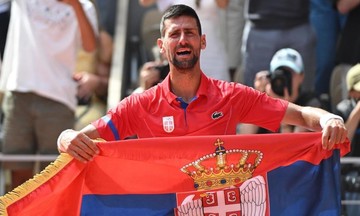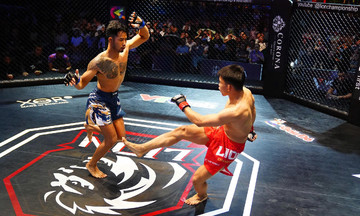On 2/8 in Tokyo, a single boxing event at Korakuen Hall resulted in two rare tragedies. Super lightweight Shigetoshi Kotari and lightweight Hiromasa Urakawa, both 28, collapsed after their respective bouts and underwent emergency brain surgery.
Kotari, who fought to a 12-round draw with Yamato Hata, lost consciousness shortly after the match and died on the evening of 8/8 from acute subdural hematoma. Urakawa, who lost to Yoji Saito in the 8th round, also passed away two days later. According to the Japan Boxing Commission, this is the first time two boxers have required craniotomies due to injuries sustained at the same event.
 |
The deaths of Shigetoshi Kotari (right) and Hiromasa Urakawa shocked the Japanese boxing world. Photo: Boxing Daily |
The deaths of Shigetoshi Kotari (right) and Hiromasa Urakawa shocked the Japanese boxing world. Photo: Boxing Daily
The history of boxing is intertwined with images of young men fighting to exhaustion for prize money. Compared to its bare-knuckle predecessor, which had no round limits, no referees, and virtually no rules, modern boxing is far more regulated. Yet, it remains the only sport where the ultimate goal is to incapacitate an opponent by punching them in the head.
According to Death Under the Spotlight, a now-defunct project that documented boxing-related fatalities from 1960 to 2011, at least 488 boxers worldwide died from injuries sustained in the ring. The actual number in subsequent years is likely much higher.
In the UK, the list of boxers who died in the ring includes Johnny Owen, a 24-year-old Welsh bantamweight who died after being knocked out in a 1980 world title fight; Bradley Stone, 23, from East London, who succumbed to a blood clot on the brain in 1994; 25-year-old Scottish boxer Jimmy Murray, who died after being knocked out in the final round of a British title fight in 1995; and Mike Towell, a 25-year-old welterweight, who died after a fifth-round knockout in a Glasgow bout in 9/2016.
A notable case is that of Scott Westgarth, a 31-year-old light heavyweight from Northumberland. He died just hours after winning a 10-round fight at the Dome Leisure Centre in Doncaster in 2/2018. It was the biggest victory of Westgarth's career. Tragedy struck soon after. He was able to give post-fight interviews but, upon returning to the dressing room, he vomited, collapsed, and died from a brain bleed.
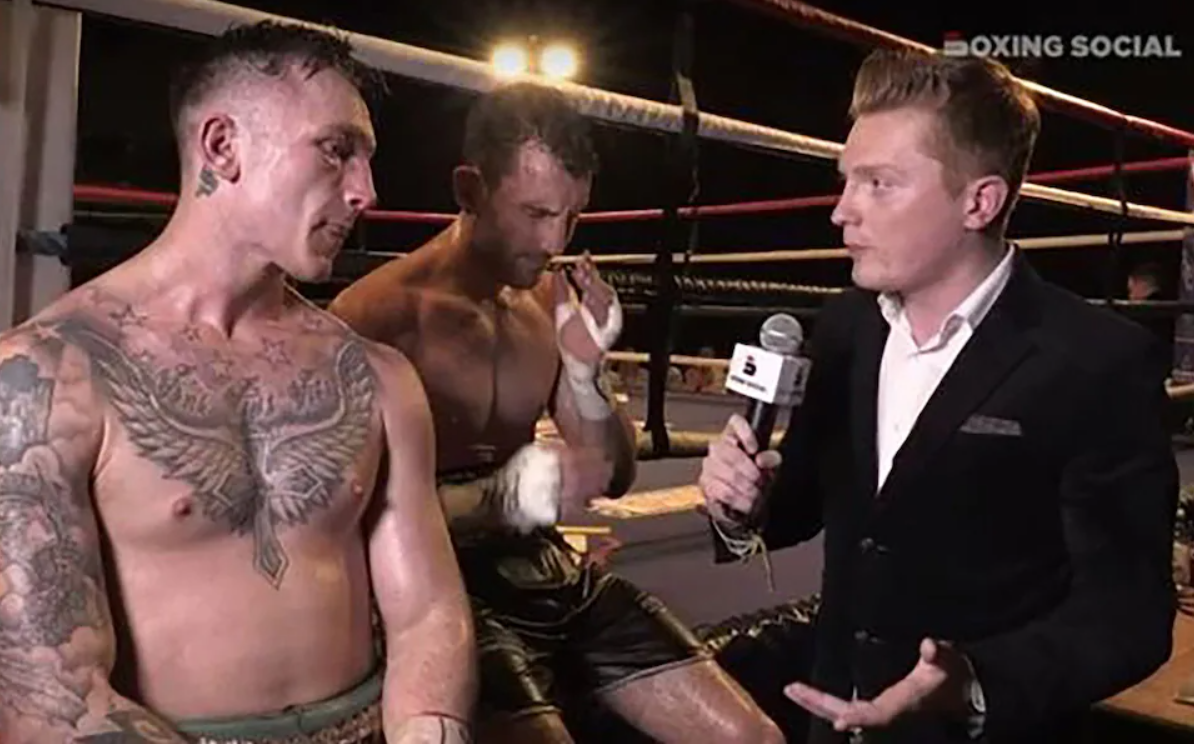 |
Scott Westgarth (center) appeared unwell during a post-fight interview - minutes later, he collapsed and died from a brain hemorrhage. Photo: Boxing Social |
Scott Westgarth (center) appeared unwell during a post-fight interview - minutes later, he collapsed and died from a brain hemorrhage. Photo: Boxing Social
Two non-fatal but nationally traumatic bouts, however, did more damage to boxing's image than any single tragedy. Michael Watson was left in a coma and nearly died after his 1991 fight with Chris Eubank, and American boxer Gerald McClellan was left partially blind and deaf, brain-damaged, and unable to walk properly after his 1995 bout with Nigel Benn.
"The American Association of Neurological Surgeons estimates the force of a professional boxer's punch is equivalent to being hit with a 6 kg bowling ball hurled at 32 km/h," said Luke Griggs, CEO of the brain injury charity Headway, and one of boxing's most outspoken critics. "Every blow to the head can cause bruising or bleeding to the brain. The more blows, the greater the risk. So no one should be shocked or surprised when these tragedies occur," Griggs added.
According to Griggs, other risks include repeated concussions, which can lead to neurodegenerative diseases such as dementia, Parkinson's, and chronic traumatic encephalopathy (formerly known as punch-drunk syndrome), often accompanied by symptoms like slurred speech, memory loss, depression, and violent behavior.
The decline of Muhammad Ali – diagnosed with Parkinson’s just three years after retiring and a shadow of his former self before his death in 2016 – is a stark reminder.
 |
Muhammad Ali was diagnosed with Parkinson's disease just three years after retiring from boxing. Photo: Reuters |
Muhammad Ali was diagnosed with Parkinson's disease just three years after retiring from boxing. Photo: Reuters
There's also growing evidence of a clear link between boxing and declining brain function. A meta-analysis of previous studies published in the Clinical Journal of Sport Medicine found that one in three of 411 amateur and professional boxers had some degree of brain shrinkage, while in a group of 71 current and retired boxers, a staggering 46 (62%) had dementia or mild cognitive impairment.
"Every time you take a blow to the head, cells and neural pathways are damaged," explained Tony Belli, professor of trauma neurosurgery at the University of Birmingham. "While the inflammation will eventually subside, if the brain is injured again, the inflammatory response is reactivated very quickly. Concussion also releases toxic proteins, which kill nerve cells. And because the brain has almost no capacity to regenerate, repeated concussion causes damage that is both irreversible and progressive."
In other words, mental decline continues even in the absence of further injury, only ceasing when the brain is finally destroyed, resulting in death. As author and former amateur boxer Pete Carvill wrote in Death of a Boxer about Mike Towell: "The body never forgets what you do to it."
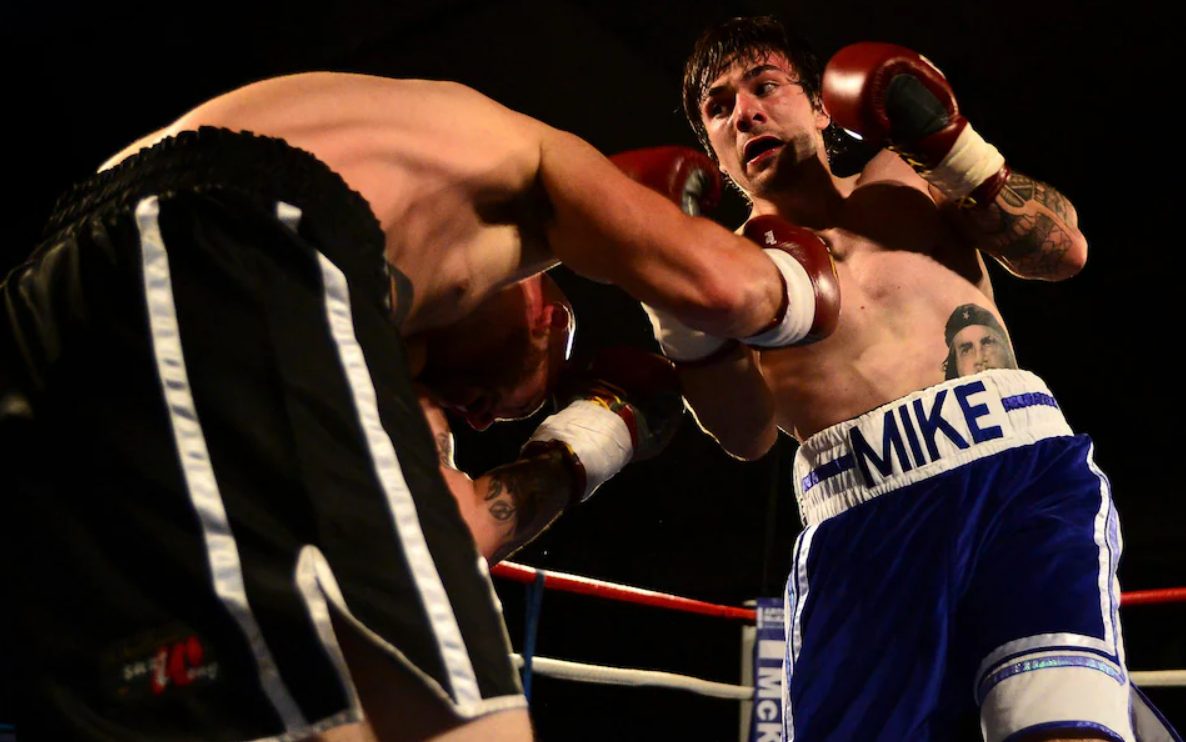 |
Mike Towell (right) during a 2015 bout - less than a year later, the welterweight died aged 25 after being knocked out in the fifth round. Photo: Telegraph |
Mike Towell (right) during a 2015 bout - less than a year later, the welterweight died aged 25 after being knocked out in the fifth round. Photo: Telegraph
For years, Luke Griggs has campaigned for a complete ban on boxing. He finds it bizarre that thousands of column inches are dedicated to the risks of brain injury in rugby or from heading a football, but relatively little is written about the risks inherent in a sport whose primary aim is to strike the head. "If footballers are at risk of neurological disease simply by heading a ball, what about those who take fast and powerful punches to the head from fit, strong boxers?" he asked.
There are several reasons why boxing injuries don't receive commensurate attention, including the influence of wealthy and powerful organizations—from promoters and broadcasters to television networks—that have a vested interest in maintaining the status quo.
Boxing's proponents often argue that anyone stepping into the ring knows the risks and that boxing is a brutal sport. Every young boxer has heard the stories of Michael Watson or Gerald McClellan. By the time they reach 14 or 15, many personally know a victim or train with a coach who was in the corner when their charge was injured. And still, they want to fight—for money, fame, or simply the primal urge to battle.
Young boxers continue to pursue the sport simply because they often have no other options. As former British Labour Party deputy leader Roy Hattersley put it: "If boxing is such a noble art, why is it only poor boys who become professional boxers?" The question remains relevant today, with the working class still making up the majority of the estimated 1,000 professional and semi-professional boxers fighting in the UK.
In the UK, before turning professional, boxers must undergo a number of checks overseen by the British Boxing Board of Control (BBBofC). "The Board pulls fighters out of fights and suspends licenses all the time. We are admired around the world for that," said Steve Bunce, the BBC's boxing voice.
But that doesn't mean boxing is entirely safe. Bunce, who wrote the autobiography Around the World in 80 Fights, stressed that the deaths and serious injuries are "indefensible." He has witnessed many deaths and around 15 other fights where the boxer ended up in intensive care: "I've sat in waiting rooms and listened to doctors tell relatives that their son, husband, or father is dead. Nobody in their right mind defends that," Bunce said.
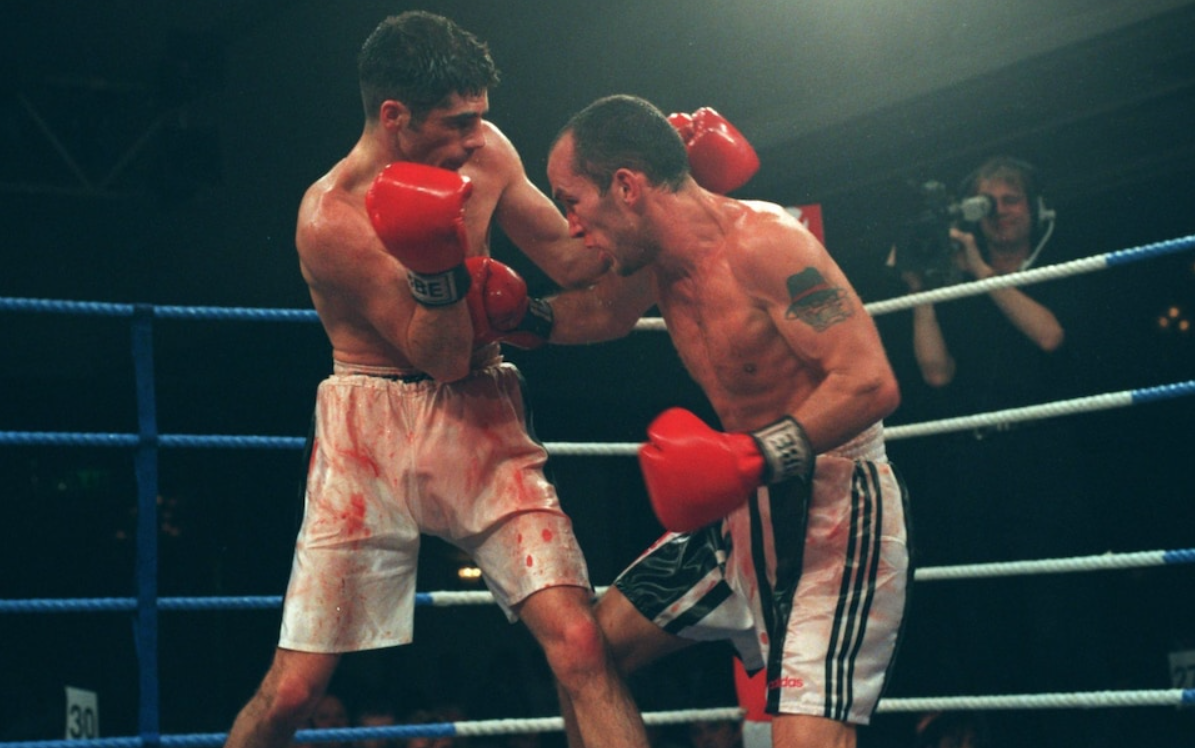 |
Scottish boxer Jimmy Murray (right) in his final, fateful fight with Drew Docherty. Photo: Allsport UK |
Scottish boxer Jimmy Murray (right) in his final, fateful fight with Drew Docherty. Photo: Allsport UK
Conversely, Bunce has also met countless people who say boxing saved their lives. "The people who want to ban boxing don't understand what it's like growing up, as in the case of Jimmy Murray, in the schemes outside Glasgow. Boxers want to fight, they want what boxing can offer them," he said.
Changes implemented since Michael Watson's near-fatal injury in 1991 have improved the sport's safety. Now, a doctor is ringside at every fight, and the nearest hospital's emergency and neurosurgery units must be on standby before a bout is allowed to proceed.
Bunce believes rule changes saved the life of British boxer Spencer Oliver, who was knocked out by a right hook while defending his European super bantamweight title in 1998. At ringside, Oliver received immediate medical attention, intubated to save his life before being transferred to Charing Cross Hospital, where a neurosurgeon successfully removed a blood clot from his brain. A week later, according to Bunce, Oliver "walked out of intensive care and went for a Chinese."
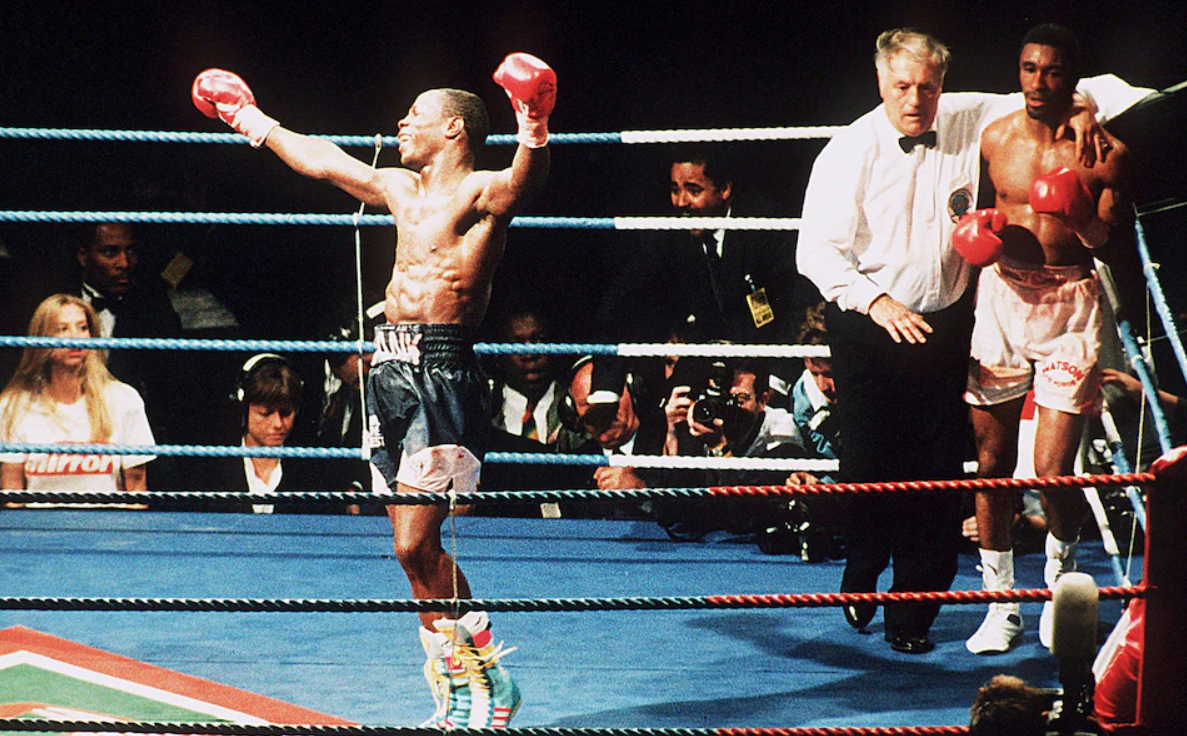 |
Michael Watson's (right) near-fatal injury in his 1991 fight with Chris Eubank changed the face of boxing. Photo: Telegraph |
Michael Watson's (right) near-fatal injury in his 1991 fight with Chris Eubank changed the face of boxing. Photo: Telegraph
However, Luke Griggs still believes the risks are too high. "The question is, where do we, as a society, draw the line on acceptable risk? A responsible society must legislate when the risk is unacceptable, even if that impinges on personal freedom," he said, comparing it to mandatory helmet and seatbelt laws – things that may have been resisted but are now accepted for the greater good.
The deaths of Japanese boxers Kotari and Urakawa, and the many tragedies before them, make the question, "Is it time to ban boxing?" – as a Telegraph analysis piece asked – more urgent than ever. Yet, for many fighters, boxing is not just a sport; it's a chance at a better life, a lifeline away from darker paths. And it is this tension between the desire to live and the risk of loss that keeps the answer to that question perpetually unresolved.
Hong Duy (adapted from the Telegraph)



